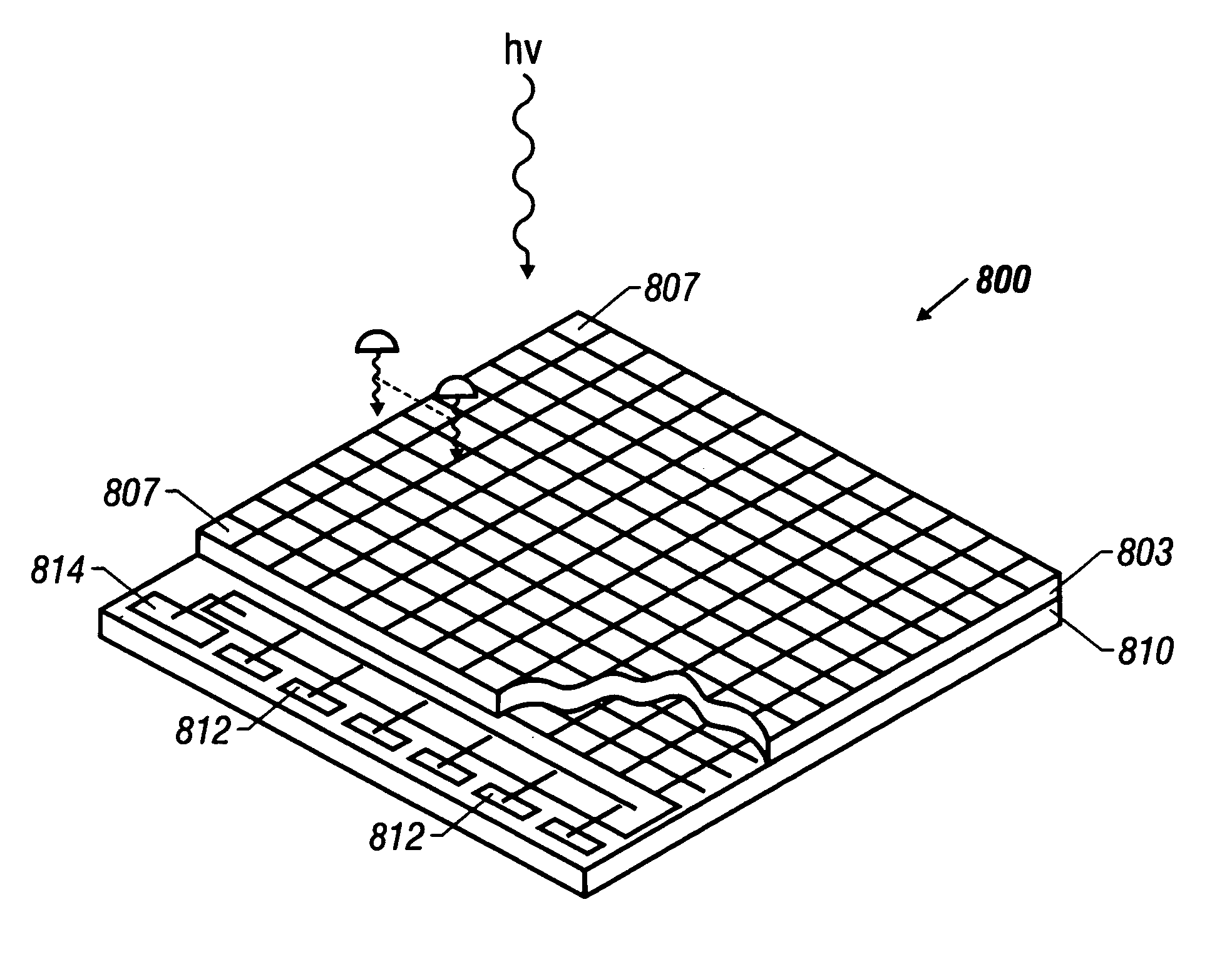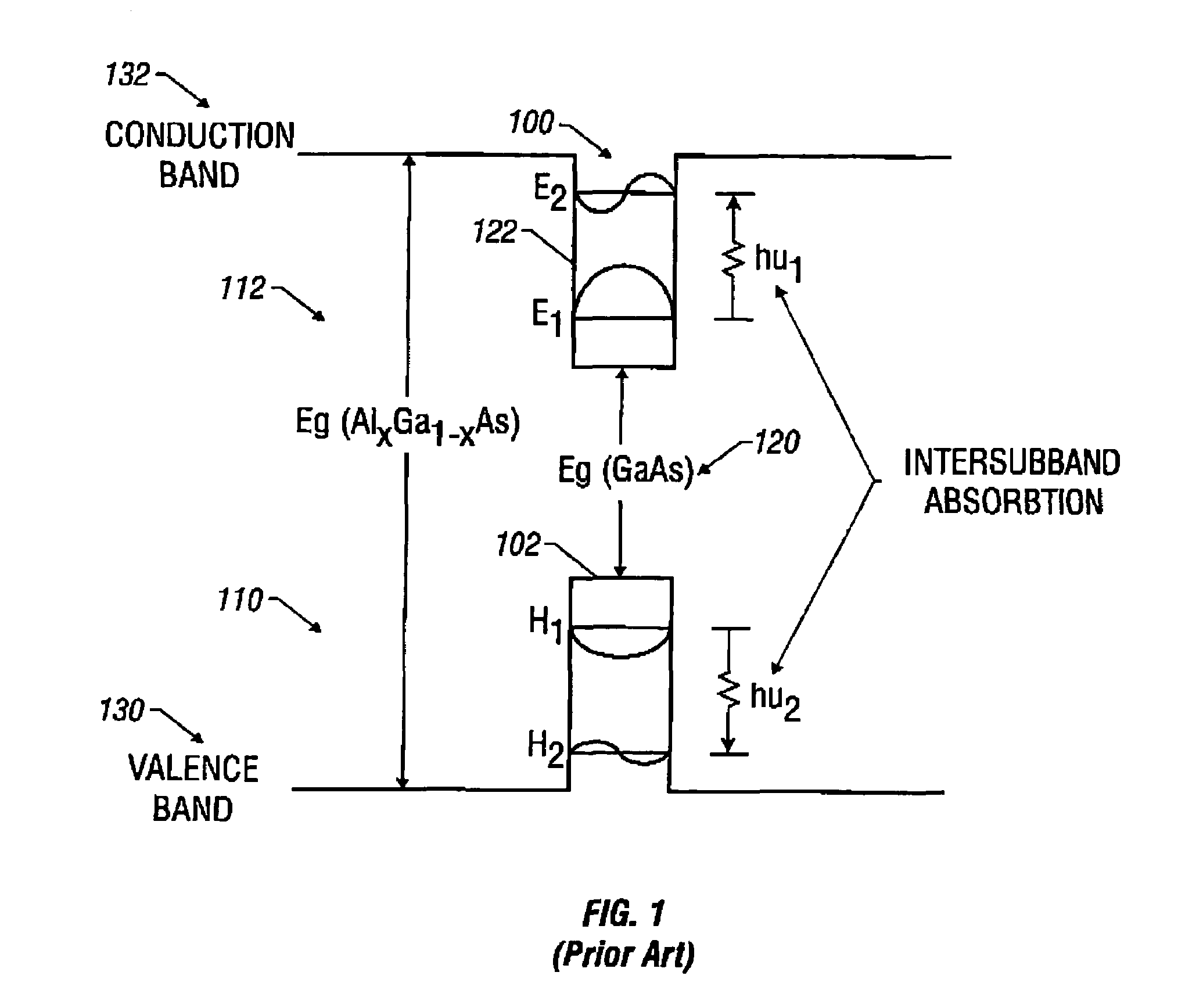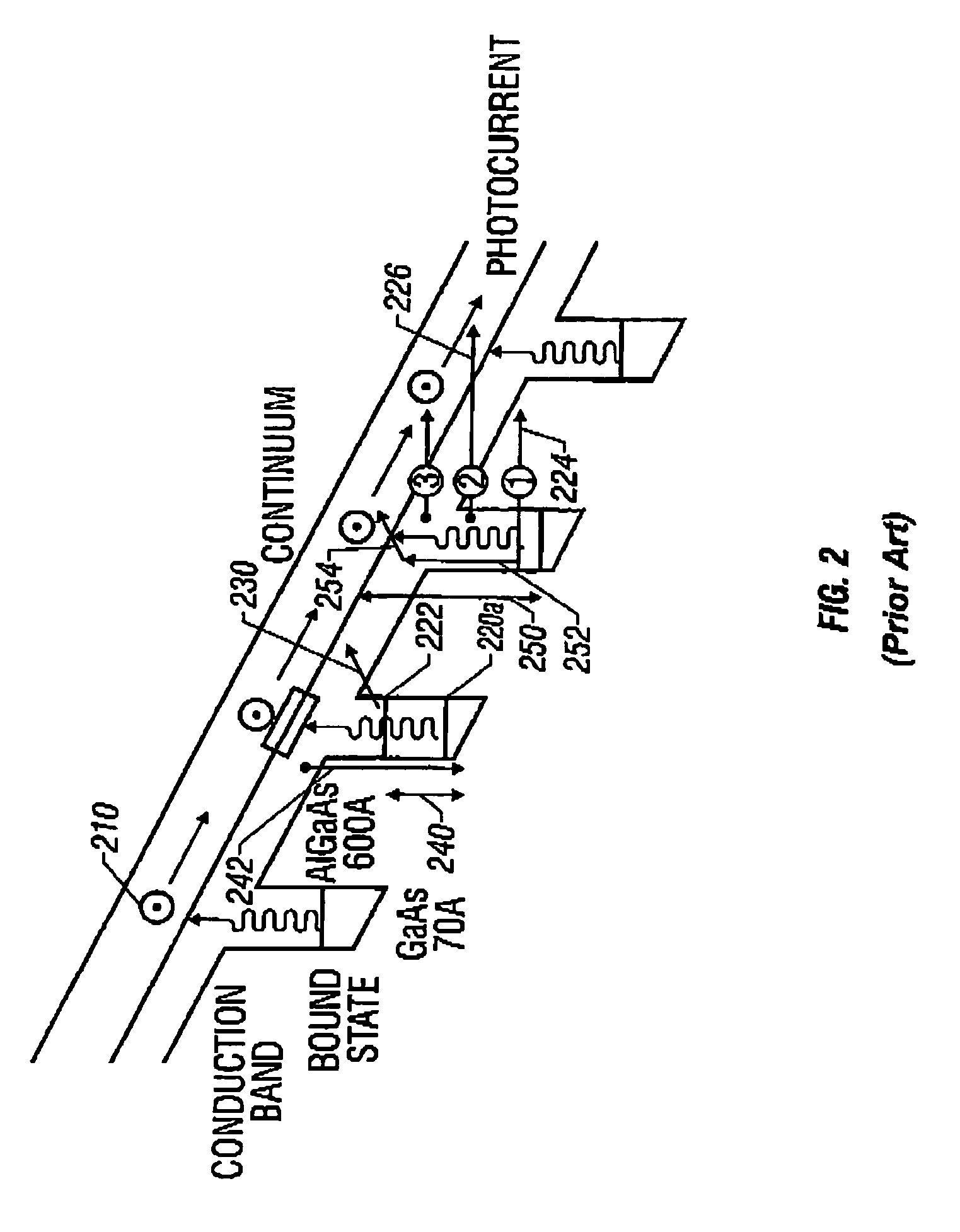Dual band QWIP focal plane array
- Summary
- Abstract
- Description
- Claims
- Application Information
AI Technical Summary
Benefits of technology
Problems solved by technology
Method used
Image
Examples
second embodiment
[0104]the invention is formed as described herein with reference to FIG. 6 to form the layered structure shown in FIG. 7. At step 600, a GaAs substrate of 630 μm is formed. This substrate is shown in FIG. 7 as substrate 700. The GaAs substrate 700 is preferable semi-insulating by virtue of being doped to N=5×1017 cm3. Stop etch layer 701 of 300 Å is also formed at step 601, covered by a 0.5 μm contact layer 701a formed at step 601a.
[0105]At step 602, molecular beam epitaxy (“MBE”) is used to form first a 500 Å barrier layer of AlxGa1-xAs layer 702 on the GaAs bottom contact layer 700. The layer 702 preferably has a thickness of 300–500 Å. This is followed by step 604 in which molecular beam epitaxy is used to form a 45 Å well 704 of GaAs. This process continues until 50 periods are formed. Each period so formed includes both a barrier and a well. One more barrier of undoped AlxGa1-xAs needs to be formed at step 605. Top contact layer 708 of GaAs is between 0.1–0.5 μm thick and appr...
first embodiment
[0138]FIG. 14 shows a cross-sectional view of a QWIP 1350 of the invention. This embodiment includes substrate 1302, contact layer 1204 and GaAs layers 1208. Also, an LWIR stack 1202 and an MWIR stack 1200 are shown. A metal contact layer 1352 is disposed on top of the LWIR stack and a second metal contact 1354 is formed on top a portion of the MWIR stack 1200 which protrudes adjacent to the LWIR stack. A pair of indium bumps 1356 and 1358 are disposed on top of the respective metal contacts 1352 and 1354. Identical QWIP structures 1350 are arranged in columns and rows, one per pixel, as shown in FIG. 14.
[0139]In this embodiment, it is possible to read out both LWIR and MWIR outputs simultaneously by electrically addressing the indium bumps individually. This may be done using a hibridized multiplexer such as the multiplexer 810 shown in FIG. 8. Also, since each pixel is used for both colors, there is full spatial resolution.
[0140]FIGS. 15A–C show cross-sectional views of a single p...
third embodiment
[0148]FIG. 17A shows a schematic conduction band diagram of a two-color bound-to-quasibound QWIP 1700 of the present invention. This embodiment provides a smooth continuum transport band (with no steps) for photoexcited carriers from quantum wells responsive to both wavelengths. In this embodiment, the two wavelengths are two different LWIR wavelengths, such as 8.5 and 10.5 μm, referred to as LW1 and LW2 respectively.
[0149]A smooth continuum transport band is desirable in this embodiment because the two different wavelength QWIP structures are interlaced, in an alternating structure. With the LW1 and LW2 QWIPs next to each other, the smooth conductive band will prevent extra quantum mechanical reflections in the continuum transport band, which would otherwise occur if the transport band abruptly changed. The smooth transport band results from having a uniform barrier height between the different wavelength sensitive QWIPs in the two-color QWIP structure 1700. A uniform barrier heigh...
PUM
 Login to View More
Login to View More Abstract
Description
Claims
Application Information
 Login to View More
Login to View More - R&D
- Intellectual Property
- Life Sciences
- Materials
- Tech Scout
- Unparalleled Data Quality
- Higher Quality Content
- 60% Fewer Hallucinations
Browse by: Latest US Patents, China's latest patents, Technical Efficacy Thesaurus, Application Domain, Technology Topic, Popular Technical Reports.
© 2025 PatSnap. All rights reserved.Legal|Privacy policy|Modern Slavery Act Transparency Statement|Sitemap|About US| Contact US: help@patsnap.com



